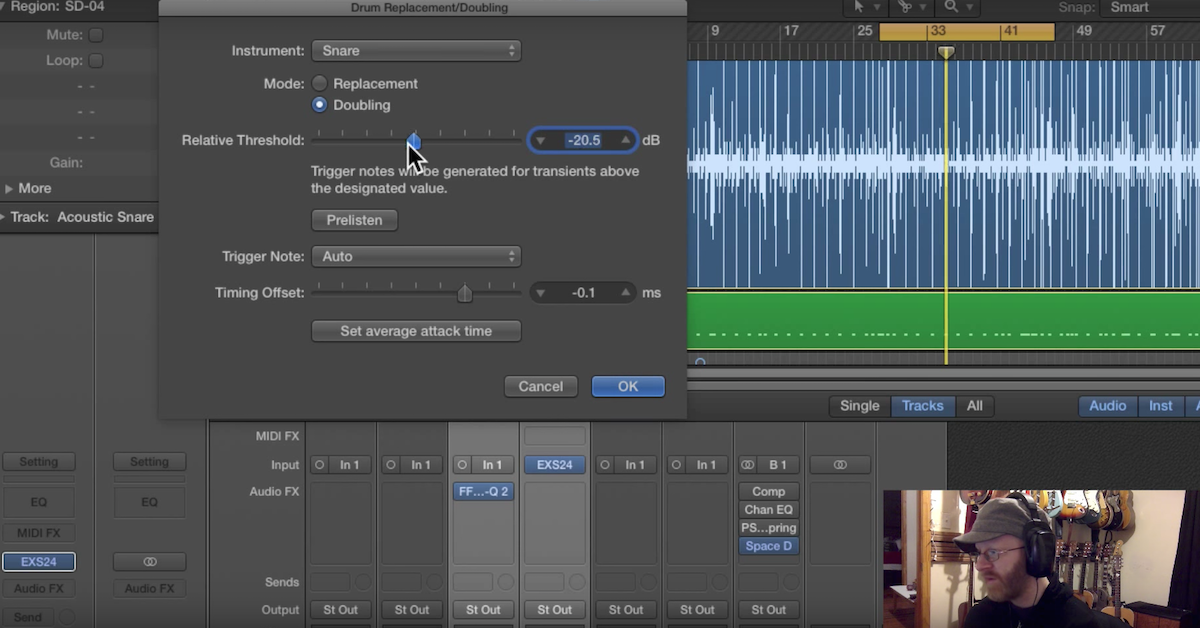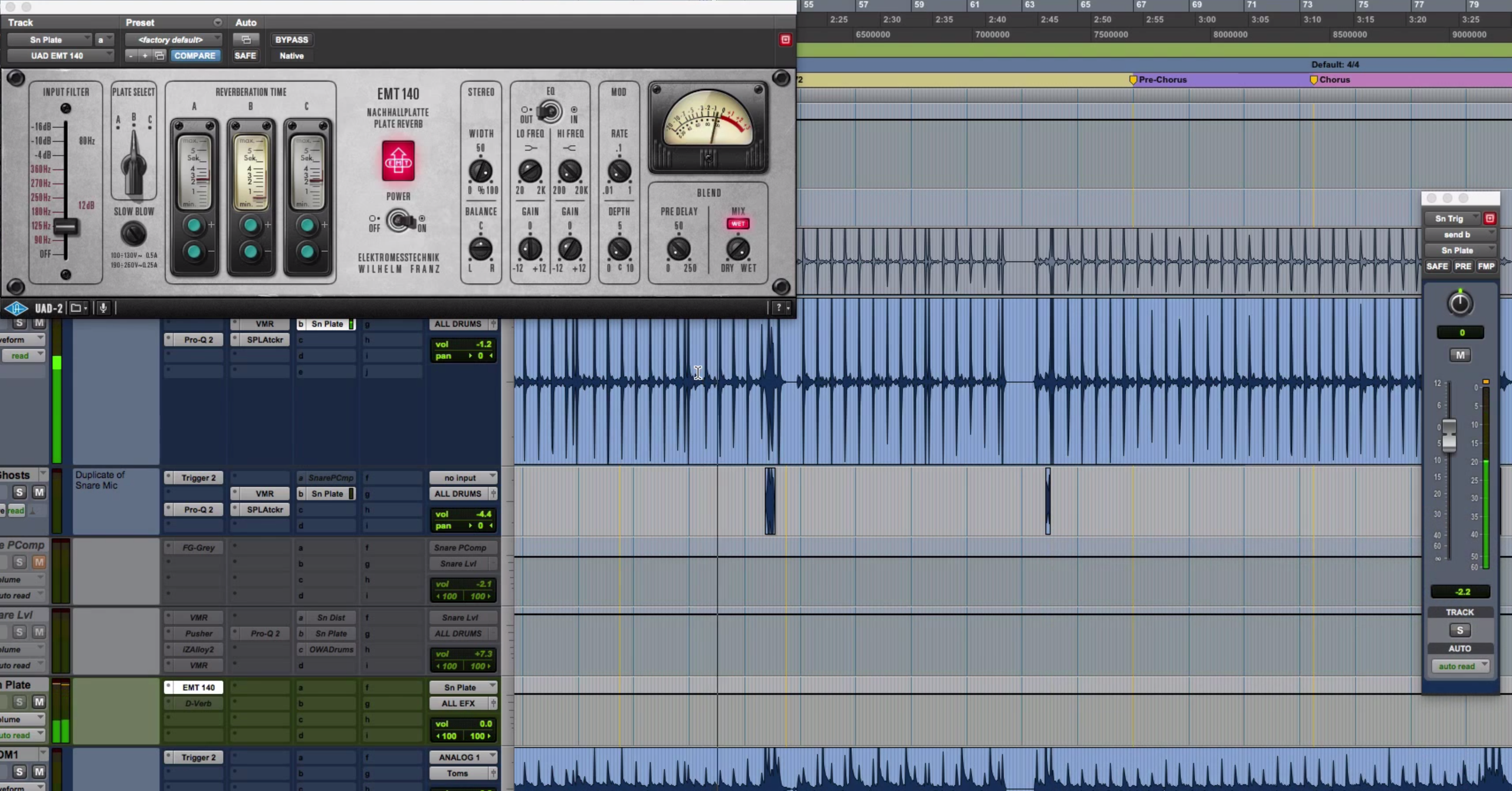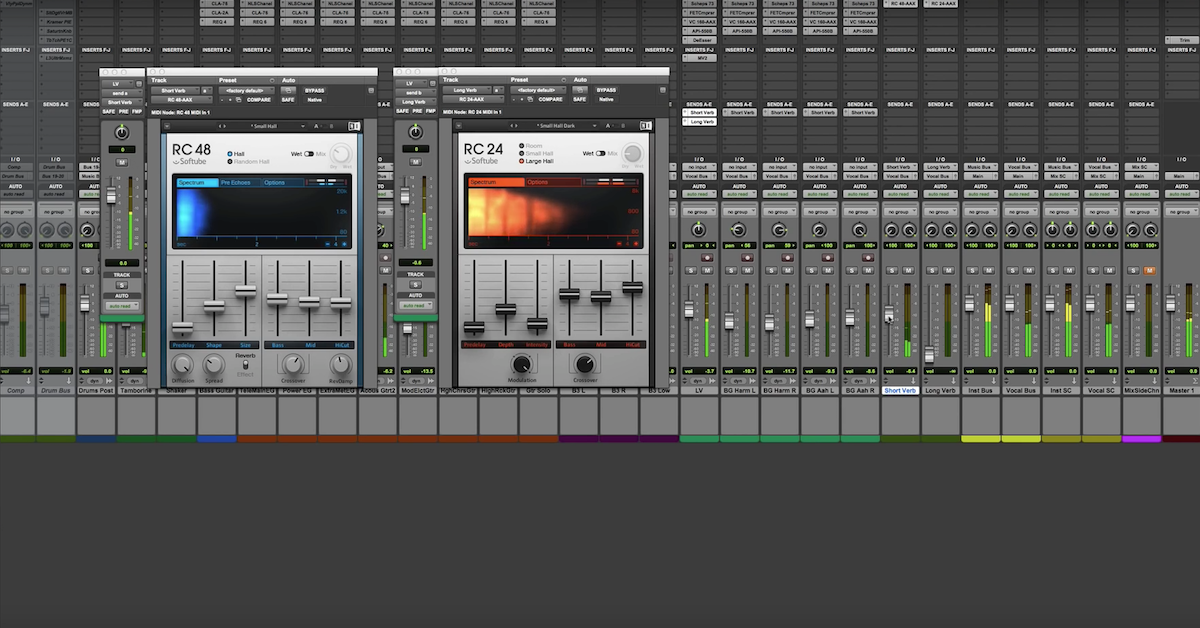5 Ways to Use Reverb on Drums in a Mix
Article Content
“In the beginning, God created Drums, and created Reverb so Drums would not be alone in the world.” — Not The Bible.
To this day, that quote lives with me while I’m mixing music. Probably because I made that quote up today. Honestly, I just couldn’t figure out a good way to start this article. I guess I get a pass because there’s about to be some great information coming your way? I’ll be talking about both acoustic and programmed drums, so Rock, EDM, Pop and Hip-Hop will all feel at home here.
Intro. Over. Nailed It.
1. If You’re Not With The One You Love, Love The One You’re With
This one is for my rock people. Any space can be great for drums if you embrace it. If you’re in a giant warehouse, no, you’re not going to get that tight punchy sound. But you’re recording drums in a giant warehouse! From the get-go, you want to put up room mics and possibly rewrite the drum parts to be a bit more sparse to work in a cavernous space. Once it comes time to mix — mix into the room capture.
Whether you’re in a studio, a stone basement, Headley Grange, any other grange or a tiny living room, acknowledge the space for what it is and make it a deliberate artistic choice to use it. Embrace the space!
2. Time The Tail
Sending this one out to all my peeps — Rock, EDM, Jazz … as long as you have a snare (or toms) in your record. Reverb isn’t just a spatial tool, it’s also a rhythmic one. Reverb sustains. Just like there’s a rhythmic difference between a whole note and a quarter note with a dotted half note rest, there’s a difference between a long decay and short decay reverb.
Between each snare there is space and how that space is filled will change the feel of the song. If the space is stark dry, the drums will impart a feeling of disconnect. If there is a decay tail that cuts short, the feel will be jolty and excited. If the decay tail meets the next hit, the whole record will feel a bit “glued” and “warm”. If the decay tail rolls over to the next hit, the rhythmic elements will soften, leaving the recording feeling “big”, but not necessarily “punchy”. And I can give you some easy examples of each.
For total disconnect, check out anything by Peaches or MIA. For reverb tails that cut short creating energy off of a snare drum, check out: the 80s. The entire 80s. For connected rhythmic tails from a snare there are tons of examples — Taylor Swift “Look What You Made Me Do”, the drums on the chorus are connected while the vocals are super dry. This is also true for most Pop/R&B and a lot of Hip-Hop as well. For washed over drums, Linkin Park’s “Castle of Glass” is a great example. There are merits to every approach.
3. Power Those Crashes
A big, splashy crash cymbal carries a ton of impact and drama. A crash cymbal that dies out fast is almost funny to hear. Even if you want a tight drum sound, it may be worth considering triggering a reverb just from your crash hits. If we’re talking programmed drums, that’s easy enough — your crash is isolated on a different track. If we’re talking an acoustic kit, you may have to go in and automate a reverb send manually.
Fun tip: I like to add subtle modulation effects to my crash cymbals. Flange or chorus, used very subtly, can add an ape-ton of sparkle, fullness and personality. I’ll do this as an insert on a programmed crash, but on a kit with a triggered send, it can be fun to do this on the reverb return.
4. Snares Love Plates, But Might Be Seeing Springs On The Side
My go-to for snare drum is a plate. Plates just seem to get along really well natural room tones, so even if I have other reverbs going on the drums, I can still sneak some plate in there without a fight.
However, the same is true for springs. The only difference is that plates are subtle, while springs are generally not. That said, do we really want subtle? Sometimes. Other times we want a big ol’ boingy spring springing along with that snare.
It’s a unique texture that will automatically draw the ear to the snare. I highly recommend trying it out if your snare isn’t particularly bright or harmonically rich. A creative reverb choice can make a dead-ish snare drum spring to life. Ah? You see what I did there? Yeah?
5. Reverb On Kick? YES.
As a general rule of thumb, I keep the kick drum pretty dry. Especially on rhythmic dance tracks. However, there is definitely a time and place to putting reverb on a kick.
First off, there’s no rule against filtering the lows out of the reverb and just using it to add a bit of flavor to the top end of the kick. Second, there’s no rule against automating one kick to shoot into a reverb for accent. And these ideas can apply to any genre. Lastly, it’s sometimes more important to have a scopic sound than a punchy one — again, going back to the Linkin Park record, or Katy Perry’s “Rise” or “E.T.”.
The only “rule” in play is to define what we’re trying to evoke with our choices. Sometimes stuff that errs on the dry side is better. If we want a “raw” Hip-Hop or Punk kind of sound, we probably want to avoid reverb on our drums all together. If we want Stadium Rock with endless sound, it’s probably a good idea to fire up those reverb returns.
“And in the End, The Article was over.” — Not The Bible.





